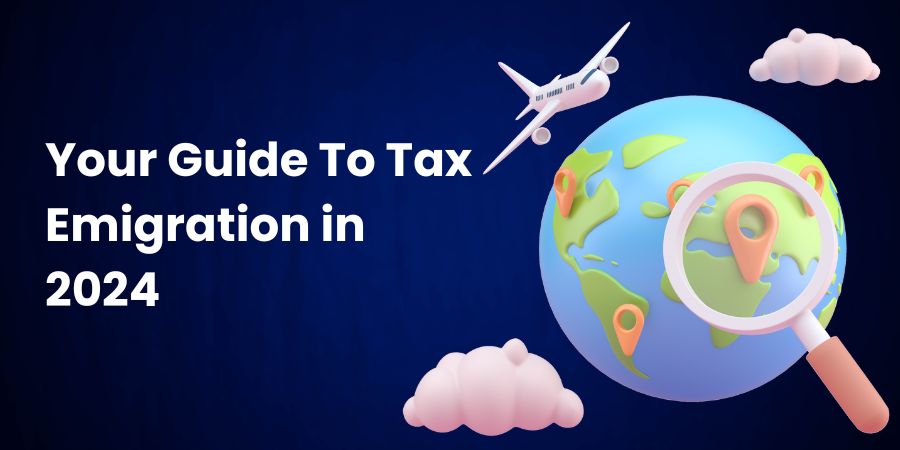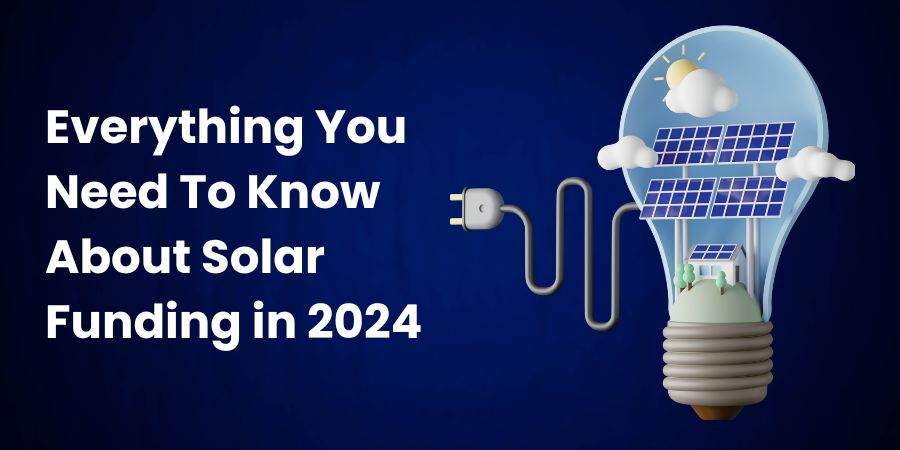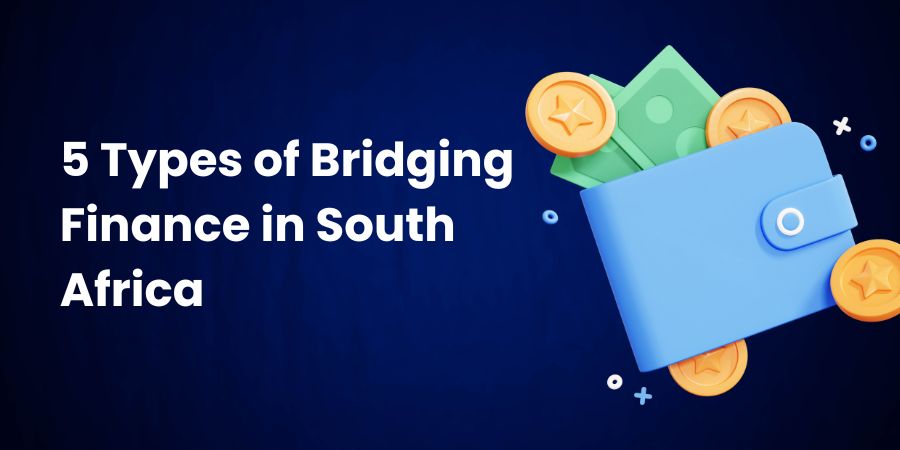
Personal Finance
The concept of tax migration, or “financial emigration,” has become increasingly relevant for South Africans moving abroad. As the global landscape evolves, so too do the opportunities for work and life in foreign countries. However, relocating abroad involves more than just packing your bags; it necessitates navigating through the complex process of tax emigration from South Africa to ensure compliance with tax laws and to optimize your financial situation. This guide aims to simplify this process, offering essential insights and steps for South Africans planning to move overseas in 2024.
Understanding Tax Emigration
Tax emigration, formally known as “financial emigration,” is the process of changing your status with the South African Revenue Service (SARS) and the South African Reserve Bank (SARB) from resident to non-resident for tax and exchange control purposes. This doesn’t mean renouncing citizenship but rather reclassifying your tax residency to reflect your move abroad, ensuring you meet all regulatory requirements and potentially optimizing your tax obligations.
The Process of Tax Emigration
The process of tax emigration involves several steps, including declaring your intention to emigrate financially to SARS and ensuring all your tax affairs are in order. It’s crucial to undertake this process meticulously to avoid complications. Seeking professional advice is highly recommended to navigate the complexities of tax laws and exchange controls. For assistance with the financial aspects of emigration, including foreign currency exchange, consider services like those offered by New Heights Finance, which specializes in helping South Africans with tax emigration.
Detailed Steps for Tax Emigration
1. Understanding Your Tax Residency
Before initiating the tax emigration process, it’s crucial to understand what constitutes tax residency in South Africa. South Africa uses a residence-based tax system, where residents are taxed on their worldwide income. Your tax residency is determined by the physical presence test and the ordinarily resident test. Understanding these criteria is the first step in the tax emigration process.
2. Consultation with a Tax Professional
Given the complexities involved, consulting with a tax professional experienced in tax emigration is advisable. They can offer tailored advice based on your specific circumstances, help you understand your tax obligations, and guide you through the process of complying with South African and international tax laws.
3. Settling Your Tax Affairs
Before you can formally emigrate for tax purposes, all your tax affairs must be in order. This includes submitting any outstanding tax returns and paying any due taxes. SARS requires a clear record before processing your emigration, which is crucial for obtaining a Tax Clearance Certificate (TCC) for emigration.
4. Completing the MP336(b) Form
Part of the emigration process involves completing the MP336(b) form, which is a Reserve Bank application. This form is essential for changing your status for exchange control purposes and requires detailed financial information, including a declaration of your assets and liabilities.
5. Tax Clearance Certificate for Emigration
Applying for a Tax Clearance Certificate (TCC) specifically for emigration is a crucial step. This certificate proves that your tax affairs are in order and is required by both SARS and the South African Reserve Bank (SARB) to process your financial emigration.
6. Opening a Non-resident Bank Account
As part of the financial emigration process, you’ll need to convert your South African bank account into a non-resident account. This account is used to manage your South African financial affairs from abroad, including the transfer of funds outside the country under the guidance of exchange control regulations.
FAQs
What is tax emigration in South Africa?
Tax emigration is the formal process of changing your status with SARS and the SARB from a tax resident to a non-tax resident. This is an essential step for South Africans moving abroad to ensure compliance with local tax laws and to manage their tax obligations effectively.
How do I financially emigrate from SARS?
To financially emigrate from SARS, you must ensure all your tax affairs are up to date, submit an emigration application through SARS eFiling, and declare your worldwide assets and income. It often requires a tax clearance certificate indicating all your tax obligations have been settled.
How do I notify SARS of emigration?
You notify SARS of your emigration by submitting a tax emigration application and the necessary documentation through their eFiling system. This includes a declaration of your assets and liabilities, and may also require a formal emigration approval from the South African Reserve Bank (SARB).
What happens if you don’t financially emigrate from South Africa?
Failing to financially emigrate can lead to significant legal and financial implications. You may continue to be taxed on your worldwide income by SARS, face penalties for non-compliance, and encounter difficulties with accessing and transferring funds abroad. It’s crucial to complete this process to avoid these complications and ensure your finances are properly managed according to your new residency status.
What is the difference between tax emigration and physical emigration?
Tax emigration refers to the process of changing your status with SARS and SARB to non-resident for tax and exchange control purposes. Physical emigration is the act of moving to another country. Tax emigration is a legal and financial process, while physical emigration involves relocating your life and possessions.
Can I reverse my tax emigration status?
Yes, it is possible to reverse your tax emigration status if you return to South Africa and meet the criteria to be considered a tax resident again. This process involves re-registering with SARS as a tax resident and ensuring compliance with the relevant tax laws and regulations.
What are the consequences of incorrectly declaring my tax status?
Incorrectly declaring your tax status can lead to significant penalties, interest charges, and legal action from SARS. It’s important to accurately declare your status and fully disclose all required information to avoid these consequences.
Conclusion
Tax migration is critical for South Africans moving abroad, ensuring compliance with tax laws and optimizing financial arrangements in their new country of residence. The process can be complex, involving various legal and financial considerations. However, you can navigate this transition smoothly with careful planning and the right guidance, such as the services offered by NH Finance for tax emigration from South Africa. Ensuring your tax status accurately reflects your residency is not just about legal compliance; it’s a step towards securing your financial future as you embark on your new life abroad.
Frequently Asked Questions
Q: What is tax emigration for South Africans?
Tax emigration is the formal process of changing your status from being a tax resident to a non-tax resident of South Africa in the eyes of the South African Revenue Service (SARS). This process is important for individuals who have left or are planning to leave South Africa to live or work abroad for an extended period.
Q: Why would a South African need to consider tax emigration?
A South African might need to consider tax emigration to avoid being taxed on their worldwide income by SARS. As a tax resident, you are liable to pay tax in South Africa on your global income. By becoming a non-resident for tax purposes, you are only taxed on your South African-sourced income.
Q: What are the criteria for being considered a non-resident for tax purposes in South Africa?
The criteria involve not meeting the requirements of the physical presence test and/or ordinarily resident test. Essentially, if you are physically absent from South Africa for a certain period or you no longer consider South Africa your true home, you may qualify as a non-resident for tax purposes.
Q: How does one formally undergo the process of tax emigration with SARS?
The process typically involves declaring your non-residency status to SARS through your tax returns, along with providing evidence of your emigration. This might include documentation related to your employment overseas, residency status in another country, and evidence of a new home abroad. It’s advisable to consult with a tax professional to ensure all necessary documentation is properly prepared and submitted.
Q: Are there any tax implications or obligations after completing the tax emigration process?
After completing the tax emigration process, you will only be taxed on your South African-sourced income. However, it’s important to be aware of exit charges, such as Capital Gains Tax (CGT), which is often referred to as an “exit tax”. This tax is applicable to your worldwide assets, treating them as if they were disposed of at market value on the day before you cease to be a tax resident.
Q: Can a tax emigrant still own property in South Africa?
Yes, a tax emigrant can still own property in South Africa. However, rental income from that property, or any other South African-sourced income, will still be subject to South African tax, albeit potentially at different rates or with different exemptions than those for residents.
Q: What is the difference between financial emigration and tax emigration?
Financial emigration is a process with the South African Reserve Bank (SARB) and relates to your status for exchange control purposes, whereas tax emigration relates to your status with SARS for tax purposes. While related, these processes are distinct and have different implications for your financial and tax affairs.
Q: Is it possible to reverse tax emigration?
Reversing tax emigration is possible if you return to South Africa and meet the criteria to be considered a tax resident again. This would involve re-establishing your economic and personal ties to South Africa and potentially passing the ordinarily resident or physical presence tests.

Business Finance, Personal Finance
As the world leans more towards renewable energy, solar power remains at the forefront of this shift, offering an environmentally friendly and cost-effective alternative to traditional energy sources. In South Africa, where sunlight is plentiful, the move to solar is not just practical but increasingly essential. The year 2024 is pivotal for homeowners and businesses considering this transition, given the evolving landscape of solar funding options. This blog post delves into why solar is a wise choice in 2024 and explores the various avenues available for funding solar installations in South African homes and businesses.
Why You Should Go Solar in 2024
The benefits of going solar in 2024 are more compelling than ever. Firstly, solar energy can significantly reduce electricity bills. With South Africa’s electricity prices on the rise, solar presents an opportunity to lock in lower, more predictable costs. Secondly, solar energy is clean, reducing your carbon footprint and contributing positively to the environment. This is crucial in a time when climate change impacts are becoming increasingly severe. Thirdly, advancements in solar technology have made solar systems more efficient and cheaper, providing better value for your investment. Finally, the South African government and private sector are offering more support and incentives for solar adoption, recognizing its role in a sustainable future.
Solar Funding Options
1. Solar Rent To Own
The Solar Rent to Own option is an excellent way for homeowners and businesses to install solar panels without the high upfront costs. Under this arrangement, you pay a monthly fee for the solar system over a set period, after which ownership of the system transfers to you. This model not only makes solar accessible but also allows for savings on electricity bills to offset the rental costs.
2. Solar Investments
Investing in solar is becoming a popular option for those looking to benefit from solar energy without having direct installations on their property. Solar investment schemes allow individuals to invest in solar projects and earn returns based on the energy produced. This is a fantastic way to contribute to renewable energy proliferation while also receiving financial benefits.
3. Solar Roof Rental
For property owners with ample roof space, solar roof rental is an innovative way to monetize unused space. Solar companies install their panels on your roof, and in return, you receive rental income or discounted electricity rates. This arrangement is particularly attractive for businesses with large premises, offering a dual benefit of additional income and reduced energy costs.
4. Business Loans
Businesses looking to invest in solar energy can take advantage of various loan products designed specifically for solar installations. These loans often come with favorable terms, including lower interest rates and longer repayment periods, reflecting the financial institutions’ recognition of solar as a viable and sustainable investment. Such business loans can cover the upfront cost of solar installations, making it easier for businesses to transition to renewable energy.
Conclusion
The transition to solar energy in South Africa is a step towards sustainability and a financially savvy decision in 2024. With a range of funding options available, from rent-to-own schemes to solar investments, and from roof rentals to specialized business loans, going solar has never been more accessible. These funding mechanisms are designed to overcome the barrier of upfront costs, making it possible for more homes and businesses to harness the sun’s power. By choosing solar, South Africans can enjoy lower electricity bills, contribute to a greener planet, and participate in the growing green economy. The future is bright, and it is powered by the sun.
Frequently Asked Questions
Q: What is solar funding?
Solar funding refers to the various financial options available to individuals, businesses, or communities to install solar energy systems. These options can include grants, loans, solar leases, power purchase agreements (PPAs), and incentives like tax credits and rebates.
Q: How does solar financing work?
Solar financing can work in several ways, depending on the chosen method. For instance, solar loans allow you to borrow money to purchase your solar system outright, whereas solar leases and PPAs let you use the energy from a solar system owned by a third party. Incentives like tax credits reduce the cost of your solar system directly.
Q: What are solar tax credits and rebates?
Solar tax credits and rebates are financial incentives that reduce the cost of installing a solar energy system. A tax credit is applied to your income taxes, lowering the amount you owe by a percentage of your solar system’s cost. Rebates are typically cash back offers either from the government or the solar installer, provided after purchase.
Q: Can anyone apply for solar funding?
Eligibility for solar funding depends on the specific program or incentive. Generally, homeowners, businesses, and sometimes renters (with landlord permission) can apply for solar funding. Eligibility criteria might include location, income level, or the type of solar energy system being installed.
Q: How do I find solar funding options available to me?
You can find solar funding options by researching local and national government websites, consulting with solar energy providers, or checking with non-profit organizations dedicated to renewable energy. Many countries have specific programs to encourage the adoption of solar energy.
Q: What are the benefits of switching to solar energy?
The benefits of switching to solar energy include reducing your electricity bills, decreasing your carbon footprint, increasing your property value, and gaining energy independence. Solar energy is a renewable resource, which means it’s good for the environment and can provide consistent power supply in many locations around the world.
Q: Are solar energy systems expensive?
The initial cost of solar energy systems can be high, but various funding options and incentives can significantly reduce the out-of-pocket expenses. Additionally, the savings on electricity bills over time can offset the initial investment, making solar energy a cost-effective solution in the long run.
Q: How long do solar panels last?
Solar panels are typically warrantied for 25 to 30 years, but they can continue to produce electricity well beyond that time frame, albeit at slightly reduced efficiency levels. The lifespan of a solar panel can be influenced by factors like climate, maintenance, and the quality of the installation.

Business Finance, Personal Finance, Property
Bridging finance is a short-term loan that can provide quick access to funds when you need them. This type of finance is often used to bridge the gap between the sale of one property and the purchase of another. In South Africa, there are five types of bridging finance available, each with its own unique features and benefits. Learn more about these options and how they can help you meet your financial needs.
1. Pension Bridging Finance
Pension bridging finance is a type of bridging finance that allows individuals to access a portion of their pension fund before it is paid out. This can be useful for those who need quick access to funds for a variety of reasons, such as paying off debt or covering unexpected expenses. The amount that can be borrowed is typically based on the value of the individual’s pension fund, and the loan is repaid once the individual receives their pension payout. It’s important to note that there are certain eligibility requirements for pension bridging finance, and individuals should carefully consider the potential impact on their retirement savings before taking out this type of loan.
2. Property Bridging Finance
Property bridging finance is a type of short-term loan that is used to bridge the gap between the purchase of a new property and the sale of an existing property. This type of finance can be useful for individuals who need to access funds quickly in order to secure a new property, but are still waiting for the sale of their existing property to go through. The loan is typically secured against the existing property, and is repaid once the sale of the property is complete. It’s important to note that property bridging finance can be expensive, and individuals should carefully consider the potential costs before taking out this type of loan.
3. Business Bridging Finance
Business bridging finance is a type of short-term loan that is used to bridge the gap between the need for funds and the availability of those funds. This type of finance can be useful for businesses that need to access funds quickly in order to take advantage of a business opportunity or to cover unexpected expenses. The loan is typically secured against the assets of the business, and is repaid once the business has access to the necessary funds. It’s important to note that business bridging finance can be expensive, and businesses should carefully consider the potential costs before taking out this type of loan.
4. Legal Bridging Finance
Legal bridging finance is a type of bridging finance that is specifically designed for attorneys and law firms. This type of finance can be used to cover the costs of legal cases, such as court fees, expert witness fees, and other expenses. Legal bridging finance is typically secured against the expected settlement or judgment in the case, and is repaid once the case is resolved. It’s important to note that legal bridging finance can be expensive, and attorneys and law firms should carefully consider the potential costs before taking out this type of loan.
5. Road Accident Fund Bridging Finance
Road Accident Fund (RAF) bridging finance is a type of bridging finance that is specifically designed for individuals who have been involved in a road accident and are waiting for their RAF claim to be settled. This type of finance can be used to cover medical expenses, loss of income, and other expenses related to the accident. RAF bridging finance is typically secured against the expected settlement from the RAF, and is repaid once the claim is settled. It’s important to note that RAF bridging finance can be expensive, and individuals should carefully consider the potential costs before taking out this type of loan.
Frequently Asked Questions
Q: What is bridging finance?
Bridging finance in South Africa is a short-term loan intended to provide immediate cash flow for individuals or businesses awaiting funds from a definitive source, like the sale of a property or the payout of a mortgage bond. It “bridges” the gap between needing funds now and receiving them in the future.
Q: What are the main types of bridging finance available in South Africa?
The main types include:
- Property Bridging Finance: Funds loaned against the expected proceeds from the sale of a property.
- Pension Bridging Loans: Advances on pending pension payouts or provident funds.
- Debtors Bridging Finance: Loans against confirmed but unpaid invoices for services rendered or goods delivered.
- Business Bridging Loans: Short-term loans to cover immediate business expenses.
- Property Sale Advance: An advance on the equity of a property currently being sold.
Q: Who can qualify for bridging finance in South Africa?
Eligibility varies by the type of bridging finance:
- Individuals selling property or awaiting pension/provident fund payouts may qualify for property or pension bridging loans.
- Businesses with confirmed but unpaid invoices or immediate cash flow needs can apply for debtors or business bridging loans.
- Sellers of property with significant equity might qualify for a property sale advance.
Q: How quickly can I access funds from a bridging loan?
The speed of access to bridging finance funds can vary, but typically, funds can be available within a few days to a week after approval. The exact timing depends on the lender’s processes and the type of bridging finance.
Q: What are the interest rates and fees for bridging finance in South Africa?
Interest rates and fees for bridging finance are generally higher than those for traditional loans due to the short-term and higher-risk nature of the loan. Rates and fees will vary significantly between lenders and depend on the type of bridging finance, the loan amount, and the expected duration of the loan.
Q: What risks are associated with taking out bridging finance?
The primary risks include high-interest rates and the potential for financial strain if the expected funds (from a property sale, invoice payment, pension payout, etc.) are delayed beyond the term of the bridge loan or if the final amount received is less than anticipated.
Applying typically involves contacting a lender specializing in bridging finance and providing documentation that supports your expected payout or
Q: How do I apply for bridging finance in South Africa?
Applying typically involves contacting a lender specializing in bridging finance and providing documentation that supports your expected payout or sale. This might include sale agreements, pension documentation, or confirmed invoices, along with personal or business financial statements.
Q: Can bridging finance be used to purchase a new property before selling my current one?
Yes, property bridging finance can be specifically used to access the equity in your current property to finance the purchase of a new property before the sale of your existing property is finalized.
Personal Finance
Are you wondering, “can I get a loan against my house?” If you’re struggling with debt and own a home, you may be able to use a loan against your house to consolidate your debts and simplify your payments. However, it’s important to understand the risks and benefits of this option before making a decision. Here’s a step-by-step guide to help you navigate the process.
Understand the Risks and Benefits of Using a Home Equity Loan
Before using a loan against your house to consolidate debt, it’s important to understand the risks and benefits. One benefit is that you may be able to secure a lower interest rate than what you’re currently paying on your debts. However, the risk is that if you’re unable to make payments on the loan, you could lose your home. It’s important to carefully consider your financial situation and consult with a financial advisor before making a decision.
Determine How Much Equity You Have in Your Home
The first step in using a loan against your house to consolidate debt is to determine how much equity you have in your home. Equity is the difference between the current market value of your home and the amount you owe on your mortgage. You can find out how much equity you have by getting a home appraisal or by checking your most recent mortgage statement. Once you know how much equity you have, you can determine how much you may be able to borrow against your home. Keep in mind that lenders typically only allow you to borrow up to a certain percentage of your home’s equity, usually around 80%.
Shop Around for the Best Loan Terms and Interest Rates
Once you have determined how much you may be able to borrow against your home, it’s important to shop around for the best loan terms and interest rates. Start by researching different lenders and comparing their rates and fees. You may also want to consider working with a mortgage broker who can help you find the best loan options based on your specific financial situation. Be sure to read the fine print and understand all the terms and conditions of the loan before signing any agreements. Remember, taking out a loan against your house is a big financial decision, so it’s important to do your research and make an informed choice.
Use the Loan to Pay Off High-Interest Debt
Once you have secured a loan against your house, it’s important to use the funds to pay off high-interest debt. This could include credit card balances, personal loans, or other types of debt with high interest rates. By consolidating your debt into one loan with a lower interest rate, you can save money on interest charges and potentially pay off your debt faster. Be sure to make all your loan payments on time to avoid any negative impact on your credit score.
Create a Plan to Avoid Future Debt and Stay on Track
Consolidating your debt with a loan against your house is just the first step in getting your finances back on track. It’s important to create a plan to avoid future debt and stay on track with your payments. This could include creating a budget, cutting unnecessary expenses, and building an emergency fund. It’s also important to avoid taking on new debt while you’re paying off your consolidated loan. By staying disciplined and focused on your financial goals, you can achieve long-term financial stability.

Personal Finance
Buying a car is a pretty substantial purchase and many do not have the cash to purchase outright. Nonetheless, you have a few options to choose from, you could decide to go the traditional way by taking a loan. However, if you have a bad credit score your chances of getting approved for an auto loan are slim.
In such a situation, another alternative is rent-to-own vehicle financing. Purchasing a vehicle through a rent-to-own option allows people with a not-so-good credit score to get a car.
Let’s look at what rent-to-own car financing is, what makes it different and some considerations to help you decide whether a rent-to-own car is a right choice for you.
How vehicle rent-to-own works
Rent-to-own financing allows you to rent a vehicle for a set period of time usually between 12 – 60 months, after which it becomes yours. Rent-to-own generally requires buyers to make a down payment and then make payments on a regular basis usually on a weekly or monthly basis.
Qualifying for financing requires proof of identity, proof of regular income, and your place of residence. Unlike other financing options, rent-to-own does not involve checking credit scores meaning if you have a low credit score, you can still get a rent-to-own car.
What are the advantages of rent-to-own car purchases?
Ownership: With rent-to-own agreements the regular payments you make add up so that you own the vehicle at the end of the rental period. It generally requires a down payment too but be sure to check all the requirements needed to complete the program and own the car.
No Credit Checks: Compared with getting a loan rent-to-own are easy to get because it requires no credit checks.
No Interest: With a rent-to-own agreement, you pay no interest at all, because you have not borrowed any money. You are simply paying a rental fee towards the purchase of the over a certain period.
No effect on credit score: Your credit score is not affected in any way. However, if you are late on a payment you could be penalised with a late fee.
What are the disadvantages?
Expensive: With rent-to-own cars, you’ll pay significantly more for the car than it’s actually worth. Although there is no interest payment, rent-to-own car prices are usually marked up.
Frequent Payments: In most rent-to-own deals you pay back the loan weekly usually far more often than the average car buyer who takes an auto loan pays monthly.
No Warranty: There is no warranty covering a rent-to-own contract, so if the car breaks down soon after the agreement there is little to no protection.
No Protection: Many rent-to-own companies simply repossess the car immediately if a consumer can’t afford to pay or is a little late on a payment. As such, there is no consumer protection as many rent-to-own agreements do not fall within the scope of the NCA.
Before you decide to rent to own, be sure to read the contract carefully and make sure you understand all of the contract terms as regards insurance policy, termination, maintenance plan, payment fees, repossession and ownership. Better yet, consult an expert to walk you through the process. New Heights Finance is a trusted financial services provider and we can assist you with your application for rent to own cars through our vetted loan providers. Apply now.

Personal Finance
A legacy is something passed down from a predecessor to a future generation. There are many ways to leave a personal legacy. Regardless, one of the most powerful legacies you can leave is a financial legacy.
It’s pretty common for people to defer thinking about legacy planning till when they are approaching old age. It is a well-known fact that death is a reality and one never knows when it’s their time. Though it is discomforting to think about dying it is equally important to have a plan in place in the event of your death.
No matter how much you are worth, legacy planning is an important part of your overall financial and retirement planning and it’s never too early to get your affairs in order. Read on for four important steps to get organized and leave a lasting financial legacy.
1. Take a Personal Inventory
Having accumulated all kinds of assets and other things over the years it is crucial you make a list that accounts for all your belongings from your home to your personal items. This is usually the first step in getting organized so as to ensure you are not forgetting and leaving out anything of immense value.
2. Life Insurance
Life insurance protects you and your loved ones from the financial uncertainty of death or severe illness or disability. Getting life insurance is a cost-effective way of ensuring the financial security of your family or beneficiaries in the event of your passing. This is important if you have children or other family members who are dependent on you for financial support. It will provide an income for them in the event of your untimely death. If you have one already, do ensure that your beneficiaries are up-to-date and listed correctly.
3. Prepare a Will and Testament
Having a will is a significant step in securing the financial future of your loved ones. A Will is a legal document that coordinates the distribution of your assets and wealth after your death. A Will declares who the beneficiaries of your assets are and how your assets should be distributed. Having a Will protects your family or loved ones and makes it much easier to sort everything out when you die. In the absence of a Will, the process can be time-consuming and stressful as assets will be distributed according to state laws and the courts.
If you are yet to put your will together, get in touch with us for assistance over here.
4. Select The Right Estate Administrator
Your estate administrator or executor manages and administers your Will when you die. As such it is essential that you select an individual who is trustworthy, reliable and responsible. Many people appoint an executor such as their spouse or child without giving it much thought. To ensure your wishes are followed it makes sense to consider carefully who’s best suited for it.
Bottom Line
Putting your affairs in order can be a difficult thing as no one likes to think about dying. Nevertheless, failure to put a plan in place can make life difficult and strenuous for your loved ones.





